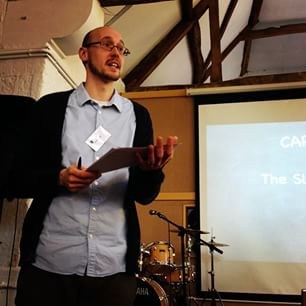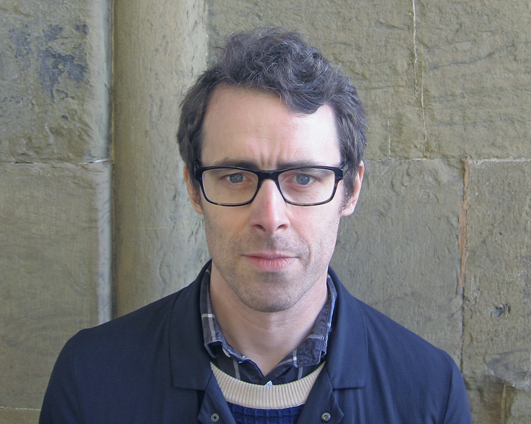Historicizing Creative Policy and Practice
Remembering the Creative City | D. Ashton
This paper examines how future visions of the creative city are bound up with partial and forgotten accounts of what creative cities generally have done before and of the past programming and events that specific cities have been involved with. The focus on “remembering” addresses the mundane challenges of being aware of, recalling and understanding what has gone before in (creative) cities. This paper explores how the creative city is remembered in two ways. Firstly, this paper examines how the success stories and best practices from successful cities of culture gain momentum and traction. This analysis of the explanatory power and appeal of different forms of information and reflection reviews a range of reports, videos, and academic publications. Secondly, this paper examines how dominant ideas of the creative city that emerges through these “lessons learnt” and examples of “best practice” have traction for other cities navigating their standing and potential. Part of this is exploring how the ‘cultural apparatchiks, intermediaries and entrepreneurs’ identified by Banks and O’Connor (2017) connect with these dominant ideas. As well as critically understanding the position of these more visible figures, it is essential to recognize the experiences for those people and communities that largely go unnamed and unconsulted. By focusing on “remembering”, this paper addresses the subtle and everyday ways in which the creative city is constructed. Empirically this involves examining how versions of “best practice” and “the creative city” are remembered, exalted, overlooked or forgotten, in a range for venues and formats, including committees, meetings, promotional materials and campaigns, conferences, publications, and reports. In doing, this paper argues that these venues and formats and their everyday and subtle “remembering” of what the creative city is can be, are an important focus for exploring diverse visions of creativity in/and the city.
Reimagining (all the while resisting) the local state’s role in cultural policy: Interrogating the case of the GLC 1981-6 | L. McFadzean
Geoff Mulgan, outgoing director at Nesta in part responsible for the Creative Clusters Programme, was once an integral part of a radical socialist municipal power set on working in and against the state to rethink cultural funding. This paper will explore the Greater London Council’s cultural policy 1981-6 – a period often looked back on as a time where radical grassroots cultural projects were supported positively by a state body, a period before neoliberalism – new conservatism – plagued the arts, before the state openly monetised cultural production and ‘progressive’ artspeak disguised professionalised and elitist institutions. The GLC reimagined what constituted cultural production. Grassroots, activist and community collectives were regarded as cultural producers, and support went not towards individuals and projects, but to sustain the collective spaces and organisations. The council also attempted to renegotiate culture as industry, seeing the state as having a twofold role creating sustainable jobs and promoting the production of a more diverse range of cultural products that represented a pluralistic London. Drawing from archival research and interviews with activists, cultural producers and academics involved with the GLC in the period, this paper will seek to query how these two, often conflicting, aims lay together. How did a radical dispersal of power that recognised culture intertwined with political movements sit with plans for a centralised economic restructuring of the ‘cultural industries’? How did such a twisted version of the original cultural industries strategy morph into the creative economy we see today, and what can we learn from this? In the case of the GLC’s cultural policy the most effective way of working in and against the state was to support radical organisations to live outside of state structures. Supporting existing movements was where the GLC thrived; where workers and thinkers began to professionalise their ‘policy’ is where any radical restructuring of power was lost.
The Persistence of Creativity: Methods and Rhetoric | P. Campbell
This paper considers the developing nature of the evidence base regarding ‘creativity’ and the ‘creative industries’ over a twenty years period of reasonably consistent promotion and support, focussing predominantly on practices within the UK that have nevertheless been influential at a wider scale. Despite the rhetoric of ‘creativity’, and associations with innovative, dynamic practice, this evidence base demonstrate a remarkable consistency over this period, both in terms of the types of evidence most prominently leveraged, and the types of problems identified with the evidence base more broadly, which seem to permanently positioned as in need of resolution. The case for creativity thus seems to be persistently problematic, yet sufficiently established to continue along established lines. Alongside this process, what are by now conventional (and questionable) assertions regarding the role of culture in economic and social regeneration continue to be made. It is argued that unless the concept of creativity is employed with more precision, this relative stagnation, and the challenges in leveraging the benefits associated with creativity, will persist, as will the broader patterns of inequality which the rhetoric of openness around creativity can serve to mask.
Chair: Simon Moreton



